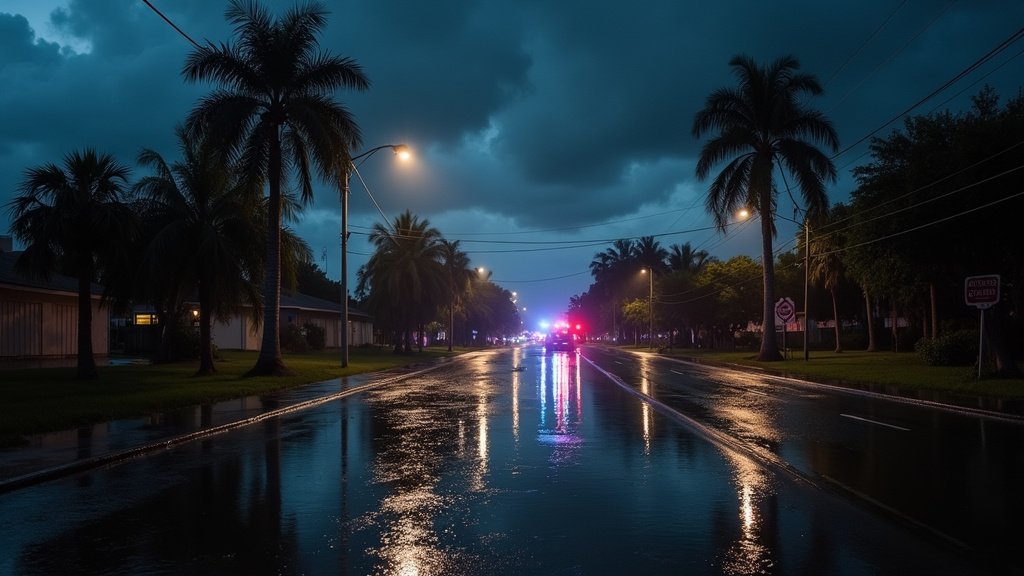When most people think of Miami, their minds immediately jump to the vibrant nightlife, art deco architecture, and sun-soaked beaches lined with glamorous hotels. But just a short drive from the hustle and bustle of South Beach lies a sanctuary that feels like an entirely different world. Biscayne National Park, often overshadowed by the glitz of the Magic City, is one of the most underappreciated treasures of South Florida. A sprawling marine park covering over 170,000 acres, it’s a paradise for nature lovers, adventurers, and anyone seeking a connection with the wilder side of Miami.
The park is unique among the country’s national parks in that 95% of it is water. With its crystalline seas, vibrant coral reefs, and a rich tapestry of mangroves and islands, Biscayne offers an experience that feels both tranquil and exhilarating. Despite being one of the largest marine parks in the United States, it remains relatively unfrequented, making it an ideal escape from Miami’s relentless energy.
A Gateway to the Past
The history of Biscayne National Park is as fascinating as its landscapes. Long before it became a protected area in 1968, the region was home to indigenous peoples, including the Tequesta, who lived off the land and sea. Evidence of their existence can still be found in the form of artifacts and shell middens scattered across the park. Later, the area became a haven for pirates, smugglers, and shipwrecked sailors navigating the treacherous waters of the Florida Straits.
These shipwrecks, now part of the park’s Maritime Heritage Trail, are one of its most unique features. Divers and snorkelers can explore six historic wrecks, each offering a glimpse into the past while teeming with marine life. Whether it’s the remains of a 19th-century schooner or a modern steel-hulled freighter, these underwater time capsules remind visitors of the perilous journeys undertaken by sailors in centuries past.
A Marine Wonderland
At the heart of Biscayne National Park lies its crown jewel: the coral reef system. Part of the Florida Reef Tract, it’s the only living coral barrier reef in the continental United States and the third-largest in the world. Beneath the shimmering surface of the water lies a vibrant, kaleidoscopic world filled with life.
Snorkeling or diving here is a transformative experience. Parrotfish flit between coral formations, their scales shimmering in the sunlight. Schools of yellowtail snapper weave through the currents like synchronized dancers. Lucky visitors might even spot a sea turtle gliding serenely past, or a nurse shark resting on the sandy seafloor. The park is also home to manatees, bottlenose dolphins, and a dazzling array of other marine creatures, making every dive an opportunity for discovery.
For those who prefer to stay above the waterline, kayaking and paddleboarding are excellent ways to explore the park’s mangrove forests and shallow seagrass beds. These ecosystems play a crucial role in maintaining the health of South Florida’s environment, acting as nurseries for fish and providing vital protection against coastal erosion.
Islands of Mystery and Adventure
Scattered across the park are the islands of the northern Florida Keys, known as the “Keys within the Keys.” While the more famous islands like Key Largo and Islamorada lie further south, the islands in Biscayne National Park are wilder, less developed, and steeped in mystery.
Elliott Key, the largest island in the park, is a favorite among campers and hikers. Once home to pioneers and pineapple plantations, it now offers visitors miles of trails winding through tropical hardwood hammocks. It’s easy to imagine a time when settlers braved the elements here, carving out a life in what must have felt like an untamed frontier.
Nearby, Boca Chita Key attracts boaters with its picturesque lighthouse and picnic facilities. The lighthouse, though not functional, offers stunning panoramic views of the surrounding waters and the Miami skyline in the distance. The island’s charm lies in its simplicity—there are no luxury resorts or crowded restaurants here, just the gentle lapping of waves and the rustle of palm fronds in the breeze.
The Fight for Preservation
Biscayne National Park isn’t just a recreational haven; it’s a vital part of South Florida’s ecosystem and a battleground in the fight against climate change. Rising sea levels, warming waters, and human activity all pose significant threats to the park’s delicate balance. Coral bleaching, caused by increasing ocean temperatures, has devastated large portions of the reef system, and invasive species like lionfish further disrupt the underwater ecosystem.
Efforts to combat these challenges are ongoing. The park works closely with conservation organizations and volunteers to restore damaged reefs, protect native species, and educate the public about the importance of marine conservation. Visitors can even participate in programs like coral planting or beach cleanups, making a tangible impact on preserving this incredible resource for future generations.
A Hidden Treasure
What makes Biscayne National Park truly special is its ability to surprise. It’s a place where you can paddle through silent mangrove tunnels one moment and dive into a bustling underwater metropolis the next. It’s a place where history and nature intersect, telling the story of Florida’s past while offering a vision for its future.
For Miami locals, the park offers a respite from the daily grind—a chance to reconnect with nature without venturing far from home. For tourists, it’s an opportunity to see a side of Miami that’s far removed from the clubs and high-rise condos.
The irony of Biscayne’s status as a “hidden gem” is that it’s hiding in plain sight. Just a 45-minute drive from downtown Miami, the park is accessible yet feels like a world away. Whether you’re a seasoned outdoor enthusiast or a first-time visitor to the Sunshine State, Biscayne National Park promises an experience unlike any other.
So, the next time you find yourself in Miami, consider trading the neon lights for starlit skies, the thrum of the city for the call of seabirds, and the familiar comfort of a lounge chair for the exhilaration of a kayak slicing through turquoise waters. Biscayne National Park is calling—and it’s a call worth answering.





